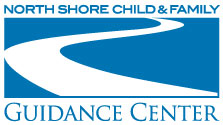LGBTQ Issues
LGTBQ Issues
LGTBQ is an acronym used to represent different sexual and gender identities. LGBTQ stands for Lesbian (a woman attracted other women), Gay (a man/woman who is attracted to other men/women, respectively), Bisexual (someone who is attracted to both men and women), Transgender (a person whose gender identity does not correspond with their birth sex), Queer (an umbrella term for someone in the LGBTQ community) and Questioning (someone who is questioning their sexual or gender identity). LGTBQ is sometimes written with a plus sign at the end, representing other sexualities and gender identities, including pansexual, polyamorous, non-binary, and more.
LGBTQ youth are at a higher risk for mental health issues than their non-LGBTQ identifying peers due to stigma and discrimination against their sexual or gender identities. Research has indicated that LGBTQ youth are more likely to suffer from depression, and LGBTQ youth are four times more likely to seriously consider suicide than their peers.
Studies have also demonstrated the positive impact that supportive home and school environments can have on LGBTQ youth mental health. Strong family bonds, safe schools and supportive adults can protect against depression and suicidal ideation in LGBTQ youth.
North Shore Child & Family Guidance Center offers a safe space of LGBTQ struggling with mental health issues and other difficulties related to their sexual or gender identity. The Guidance Center provides a combination of individual, family and group therapy for children, adolescents and young adults struggling with emotional, social or family issues related to their sexual orientation or gender identity. For more information about our services, please call us at 516-626-1971.
National Resources:
Trevor Project Lifeline: 1-866-488-7386
Read more in our blog:
He Said, She Said, They Said: A Look at Gender
A Welcoming Space for LGBTQ Clients
Sources:
